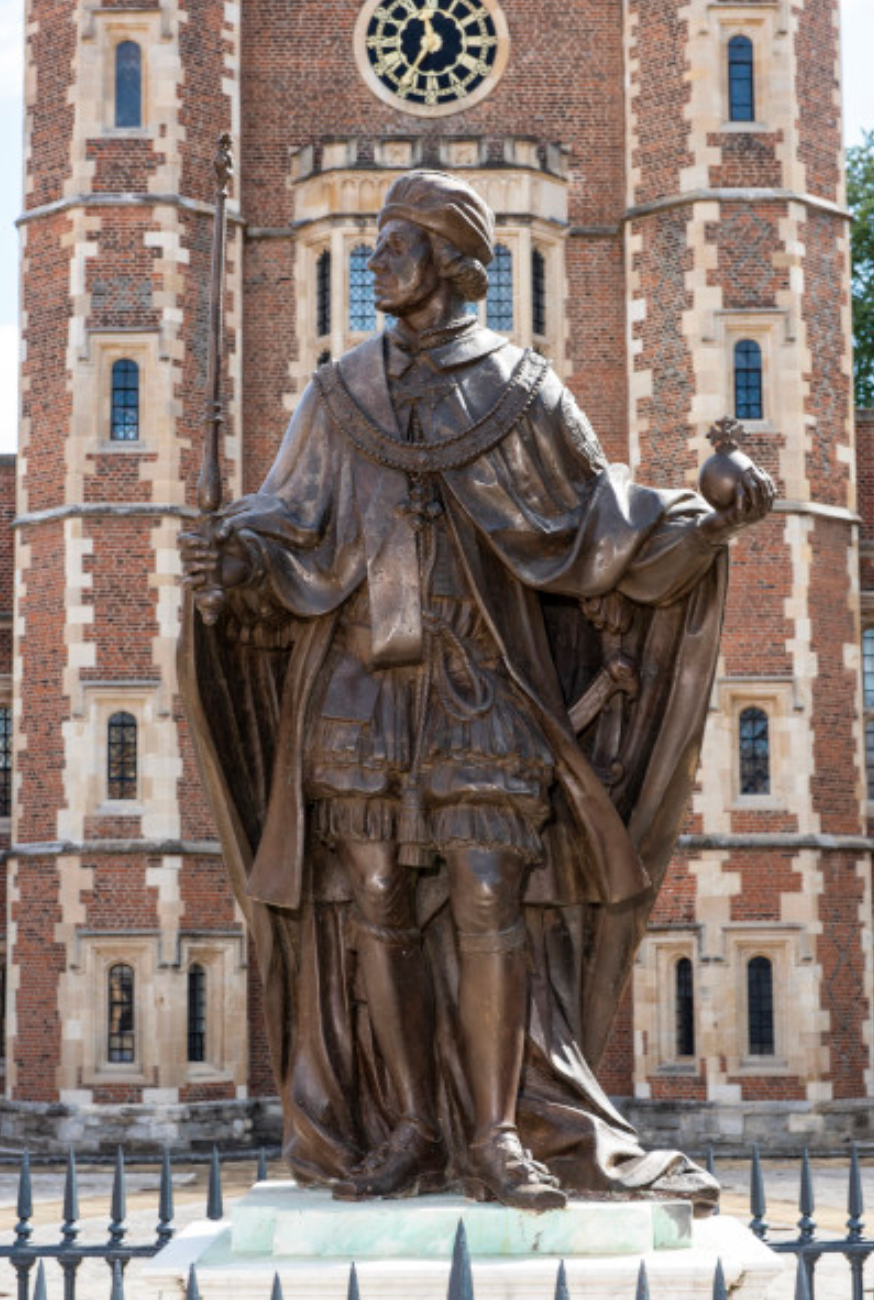Erected by Provost Godolphin in 1720, the bronze, free-standing statue of King Henry VI, by the celebrated sculptor Francis Bird, is arguably one of the most famous items in the Eton College Collections, and in time, has become part of the iconography of the College. This statue projects power in a number of different ways through its subject matter, patronage, positioning and material used.

The subject matter of the statue (the King responsible for the foundation of Eton College) is in its own right very powerful because it emphasises in a highly visual and permanent manner the privileged relationship between the Eton College and the Monarchy. It is also larger than life (seven feet high) and raised up on a plinth to increase its impact. Contemporary celebration of political power may also underpin the erection of the statue. Just six years before the statue was erected, George I ascended to the throne. Since King George I was the first King from the House of Hanover, a new royal family, the erection of a bronze statue of an earlier King may have been in part an attempt to reconnect and celebrate the established ties between the College and the Monarchy. King Henry VI is depicted as wearing the robes of the Order of the Garter dedicated to St George. This may add further political power to the statue, because it links the new King George to St George the Patron Saint of England and to a royal tradition that goes back to the Middle Ages.
This statue is also made more powerful by the material used (bronze). At the time, bronze statues were very rarely made, on account of the huge cost of material and the difficulty involved in the casting process. Because of their rarity, bronze statues would have been seen as very special and only commissioned by someone with great wealth. This commission therefore showed not only the huge economic power and generosity of the patron, but also reflected the social, political and economic power of the College. Bronze freestanding statues were, in fact, a key feature of Classical Antiquity, and so the links to the Classical World, a period idealised in the Renaissance for its grandeur and clarity of form add gravitas to this statue, increasing its prestige and power. The positioning of this statue (in the centre of the main courtyard in the symbolic heart of the school) also suggests a potential link to Donatello’s ‘David’, one of the most famous statues cast in bronze created during the Renaissance, which was originally displayed in the courtyard of the Medici Palace in Florence.[1] This connection to one of Europe’s most celebrated and powerful families (the Medici) further helps to increase the potency of the sculpture. As a result, the statue placed Provost Godolphin and the College he controlled on the same level as the Medici family.
The power of this statue did not however come to an end in the 18th century, but continues to this day. According to popular tradition, when passing the statue, you must walk around it with the left side closest to it, so that you can defend it with your right hand (sword hand) or so that your heart can remain closest to King Henry. It is as if this inanimate statue is not just a piece of history, but has a living form that needs protecting, creating a powerful and personal link that connects the Founder of the College to all Etonians who walk past it.
Inigo S, winner of the 2023 Collections Prize
This post has been excerpted from Inigo’s winning essay. The annual Collections Prize is open to Eton boys in C Block (Lower Sixth). It is an opportunity to research and write beyond the curriculum, with a focus on selected objects from the College Collections. In 2023, entrants were asked to select three objects to illustrate the theme ‘Power’.
[1] Described in Vasari’s ‘Lives of the Artists’.



